Big Island Most Famous mountain
Big Island Most Famous mountain
Duis efficitur, neque id egestas blandit, arcu lorem commodo justo, non aliquam arcu nulla et libero. Massa quis molestie venenatis, erat enim faucibus sapien, eget elementum risus sapien vel turpis. Fusce vestibulum suscipit sem, vel gravida neque maximus ut. Duis dignissim enim at lorem auctor consequat. Ut neque dui, dapibus nec molestie quis, facilisis nec odio Duis efficitur, neque id egestas blandit, arcu lorem commodo justo, non aliquam arcu nulla et libero. Massa quis molestie venenatis, erat enim faucibus sapien, eget elementum risus sapien vel turpis. Fusce vestibulum suscipit sem, vel gravida neque maximus ut. Duis dignissim enim at lorem auctor consequat. Ut neque dui, dapibus nec molestie quis, facilisis nec odio.
1. Mauna Kea: The Sacred Mountain of Hawaii and the Tallest Volcano on Earth

Mauna Kea covered in snow during the month of February in Hawaii shot taken from 4000 ft altitude.
Mauna Kea, located on the Big Island of Hawaii, is one of the most iconic and significant landmarks in the Pacific. As the tallest volcano on Earth and a revered site in Hawaiian culture, Mauna Kea holds both scientific and spiritual significance. Standing at an impressive height of 13,803 feet above sea level and more than 33,500 feet from its base on the ocean floor, Mauna Kea is technically taller than Mount Everest. The mountain's unique geography and pristine atmospheric conditions have also made it a prime location for astronomical research, home to world-class observatories. In this comprehensive guide, we will explore the geological history, cultural importance, astronomical significance, and the ongoing controversies surrounding Mauna Kea.
Geological Formation of Mauna Kea
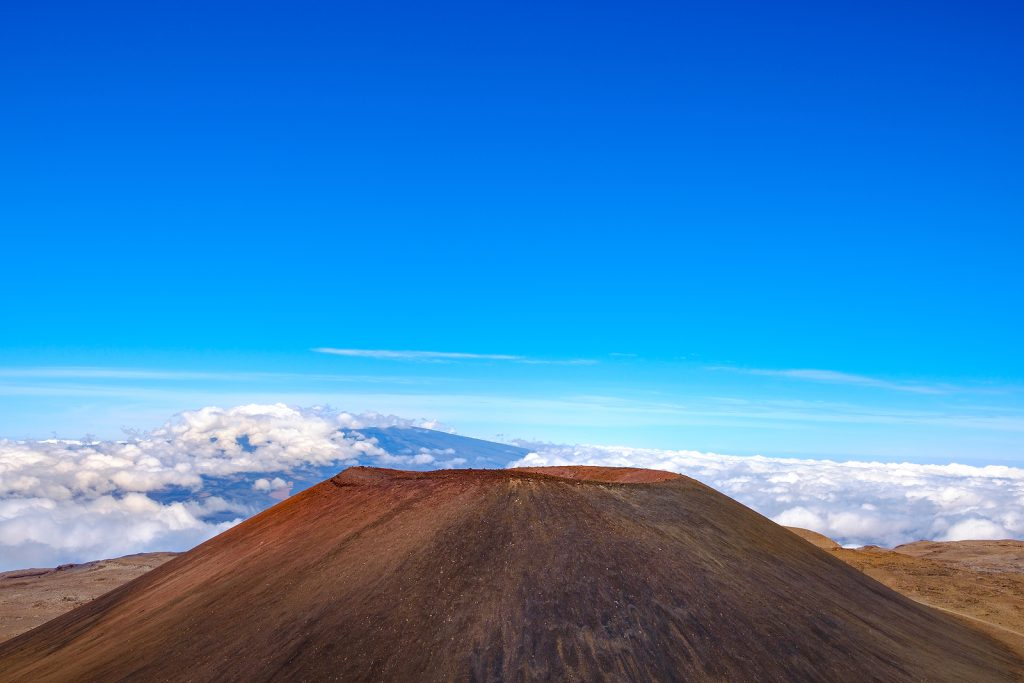
Detail landscape view of volcanic crater on Mauna Kea Hawaii USA
Mauna Kea is a shield volcano, formed by the gradual buildup of layers of basaltic lava flows over millions of years. It is part of the Hawaiian-Emperor seamount chain, a series of volcanic islands and underwater mountains created by the Hawaiian hot spot, a plume of magma within the Earth's mantle. The formation of Mauna Kea began around 1 million years ago, during the Pleistocene epoch. It is the third oldest of the five volcanoes that make up the Big Island, following Kohala and Mauna Loa.
Mauna Kea's current shape is a pointed during its post-shield stage, a phase characterized by explosive volcanic eruptions and the deposition of pyroclastic materials. These eruptions produced layers of volcanic ash, cinder, and lava rock, giving the summit its distinctive, rugged appearance. Unlike its sister volcano, Mauna Loa, Mauna Kea has been dormant for thousands of years, with its last eruption occurring around 4,600 years ago. The dormant status of Mauna Kea does not mean it is extinct; it is expected to erupt again in the distant future.
The summit of Mauna Kea is often covered with snow during the winter months, a rare phenomenon in tropical Hawaii. The name "Mauna Kea"translates to "White Mountain", a reference to its snow-capped peak. The presence of snow and ice on Mauna Kea has contributed to the formation of glacial features, making it the only Hawaiian volcano with evidence of glaciation.
The Cultural and Spiritual Significance of Mauna Kea
For native Hawaiians, Mauna Kea is not just a geographical feature. It is a sacred mountain, revered as the meeting place between the Earth and the Heavens. The mountain is considered the home of the gods, or a place where gods reside. According to Hawaiian tradition, Mauna Kea is the first-born child of Wākea, who is considered the sky father, and Papa, who is considered the earth mother, who are considered the progenitors of the Hawaiian people. In Hawaiian cosmology, Mauna Kea is regarded as the piko, or navel of the world, linking the land to the cosmos. It is a place of profound spiritual energy, where the ancient Hawaiians conducted religious ceremonies, offerings, and burials.
The summit of Mauna Kea is dotted with numerous heiau (temples) and cultural sites that date back hundreds of years. These sacred sites were used by kahuna (priests) for star navigation, prayers, and rituals. The peak was traditionally restricted to only the highest-ranking chiefs and priests, who would ascend Mauna Kea to perform ceremonies honoring the gods and seeking divine guidance.
Astronomical Observatories on Mauna Kea
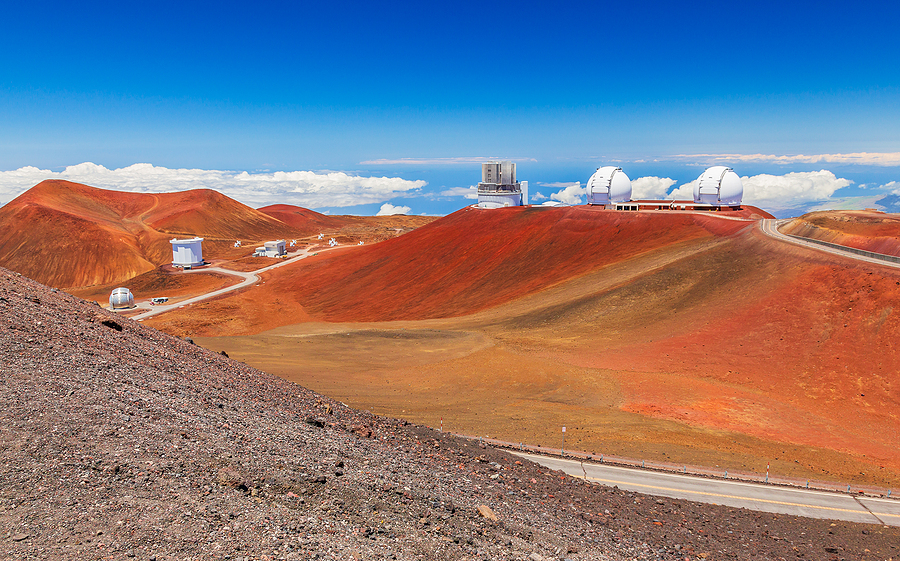
Hilo, Hawaii (The Big Island): Mauna Kea Summit Observatories.
Due to its high altitude, dry climate, and stable atmospheric conditions, Mauna Kea is considered one of the best sites in the world for astronomical observations. The summit's elevation above much of the Earth's atmosphere reduces the distortion of starlight, while the low humidity and clear skies provide optimal conditions for viewing celestial objects. As a result, Mauna Kea has become host to some of the most powerful telescopes in the world.
The Mauna Kea Observatories consist of 13 major telescopes operated by research institutions from 11 different countries. These include:
Keck Observatory: Featuring twin telescopes, the Keck Observatory is one of the largest optical and infrared telescopes in the world. Each telescope has a primary mirror measuring 10 meters in diameter, allowing scientists to observe distant galaxies and exoplanets.
Subaru Telescope: Operated by Japan's National Astronomical Observatory, the Subaru Telescope is a state-of-the-art 8.2-meter optical-infrared telescope known for its wide-field imaging capabilities.
Gemini North Telescope: Part of the International Gemini Observatory, the Gemini North Telescope offers excellent infrared and optical observations, contributing to groundbreaking discoveries in astronomy.
James Clerk Maxwell Telescope (JCMT): This telescope specializes in submillimeter astronomy, studying cold gas and dust in the universe. It has played a key role in the discovery of new star-forming regions.
The research conducted at these observatories has led to numerous astronomical breakthroughs, including the discovery of exoplanets, the mapping of distant galaxies, and the observation of black holes. The data collected from Mauna Kea's telescopes have significantly advanced our understanding of the universe.
The Controversy Surrounding the Thirty Meter Telescope (TMT)
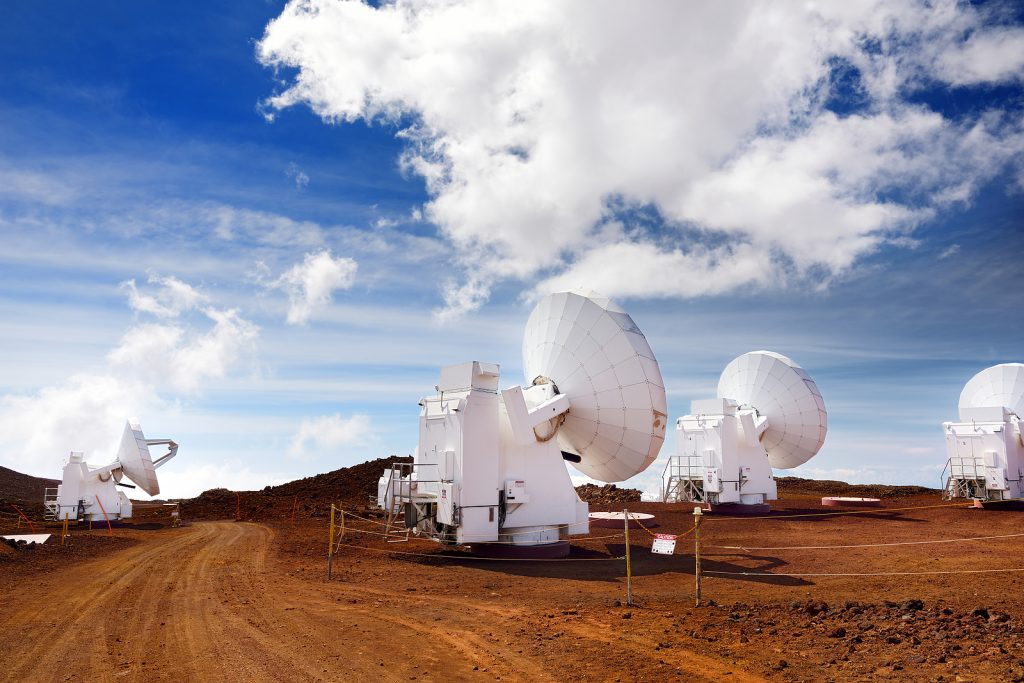
Observatories on top of Mauna Kea mountain peak: Astronomical research facilities and large telescope observatories located at the summit of Mauna Kea on the Big Island of Hawaii, United States
While Mauna Kea's observatories have contributed greatly to science, they have also been the center of controversy, particularly with the proposed construction of the Thirty Meter Telescope (TMT). The TMT project aims to build one of the world's largest telescopes on the northern plateau of Mauna Kea, which would offer unprecedented resolution and sensitivity for astronomical research.
However, the construction of another telescope on Mauna Kea would desecrate a sacred site and further damage the fragile ecosystem of the mountain. For many native Hawaiians, the summit is a place of spiritual significance that should be protected from development. They view the construction of the TMT as a continuation of the historical pattern of disregarding indigenous cultural concerns to promote Western scientific interests.
Protests against the TMT have been ongoing since the project was first proposed. In 2015, demonstrations and blockades by native Hawaiian activists temporarily halted construction. The controversy escalated and gained international attention in 2019 when thousands of demonstrators, including many kūpuna (elders), gathered at the base of the mountain to block access roads and prevent construction equipment from reaching the summit. The protests, led by the Protect Mauna Kea Movement, have been a powerful expression of indigenous rights and cultural preservation.
Supporters of the TMT, including many scientists and educational institutions, argue that the telescope would bring significant economic and educational benefits to Hawaii. They highlight the potential for groundbreaking discoveries in astronomy and the opportunities for local students and researchers. Despite these arguments, the TMT project remains stalled, with ongoing legal battles and negotiations between stakeholders.
Environmental Concerns and Preservation Efforts
Mauna Kea's unique ecosystem is home to rare and endangered species, including the Mauna Kea silversword (Argyroxiphium sandwicense), a plant found only on the slopes of the mountain. The summit's alpine desert environment, with its volcanic rock and sparse vegetation, creates a delicate habitat that is highly sensitive to disturbances. The environmental groups have raised concerns about the impact of development, road maintenance, and increased tourism on the mountain's natural resources. The runoff from construction, trash, waste from visitors, and the potential for pollution threaten the fragile environment. In response, the Mauna Kea Management Board and other conservation organizations have implemented strict guidelines to minimize human impact, including regulations regarding waste disposal and visitor access.
Visiting Mauna Kea: What to Know
Mauna Kea is a popular destination for tourists, hikers, and stargazers. The Mauna Kea Visitor Information Station, located at an elevation of 9,200 feet, serves as a starting point for most visitors. The station provides educational exhibits, guided tours, and stargazing programs. Due to the high altitude, visitors are advised to acclimate at the visitor center before ascending to the summit.
Key tips for visiting Mauna Kea:
Check Weather Conditions: The weather at Mauna Kea can be unpredictable, with sudden changes in temperature, strong winds, and snowfall during winter months. It is essential to check the weather forecast before your visit.
Prepare for High Altitude: The summit's elevation can cause altitude sickness. Symptoms include headaches, dizziness, and nausea. Visitors should take their time acclimating and stay hydrated.
Respect the Sacred Site: Mauna Kea is a place of cultural and spiritual significance for native Hawaiians. Visitors are encouraged to be mindful of the sacred nature of the mountain and follow posted guidelines and regulations.
The Legacy of Mauna Kea
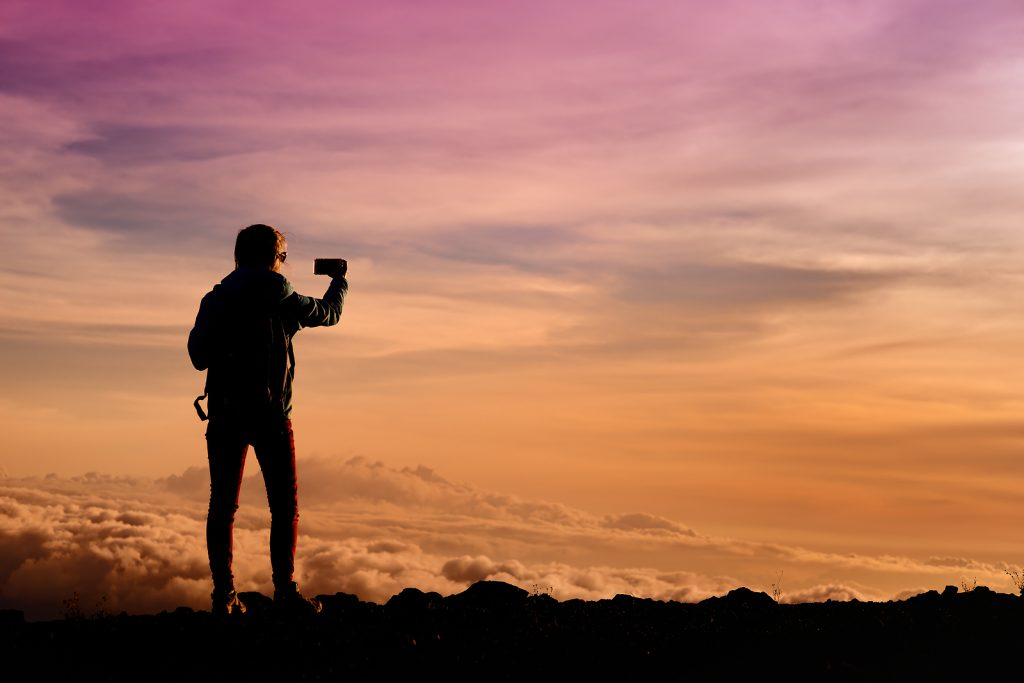
Tourist admiring breathtaking sunset views from the Mauna Kea a dormant volcano on the island of Hawaii. The peak of Mauna Kea peak is the highest point in the state of Hawaii.
Mauna Kea stands as a symbol of Hawaii's natural beauty, cultural heritage, and scientific exploration. Its towering presence and spiritual importance have made it a revered site for generations of Hawaiians, while its unique conditions have opened new windows into the universe. As debates over its use and preservation continue, Mauna Kea remains a powerful reminder of the delicate balance between cultural respect, environmental stewardship, and scientific progress.
Today, the future of Mauna Kea is a topic of ongoing dialogue, one that encompasses the rights of indigenous people, the preservation of natural landscapes, and the pursuit of knowledge. Whatever the outcome, Mauna Kea will continue to be a place of wonder, reverence, and inspiration for all who visit.
2. Mauna Loa: The Largest Active Volcano on Earth
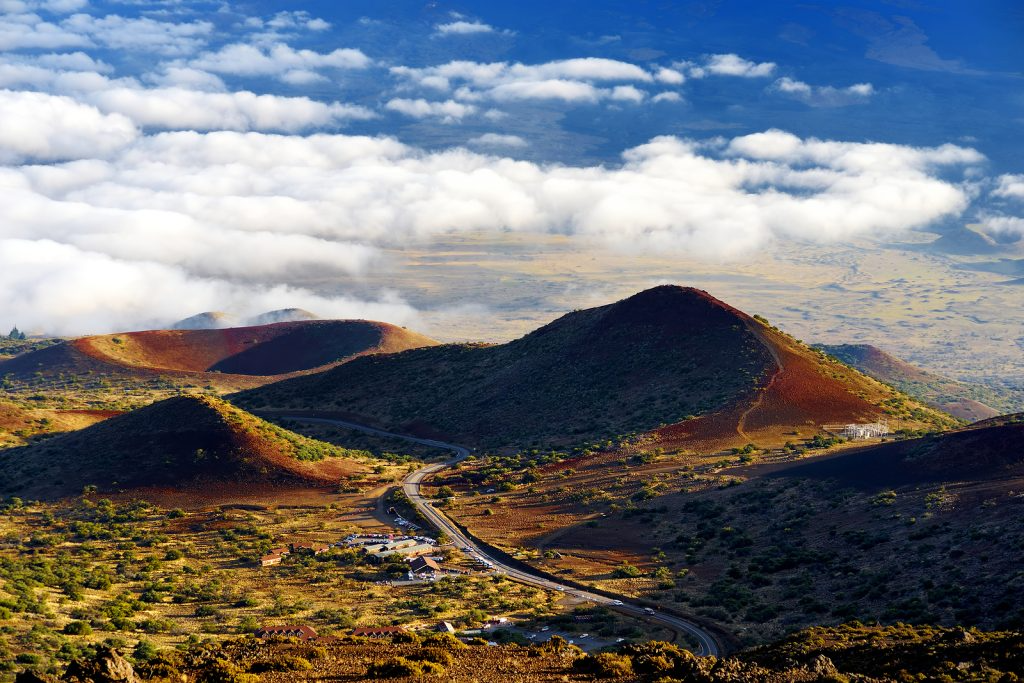
Breathtaking view of Mauna Loa volcano on the Big Island of Hawaii. The largest subaerial volcano in both mass and volume, Mauna Loa has been considered the largest volcano on Earth.
Mauna Loa, located on the Big Island of Hawaii, is the largest active volcano on Earth and one of the most active volcanoes in the world. The name "Mauna Loa" means "Long Mountain" in Hawaiian, reflecting its massive size and gently sloping shield shape. Mauna Loa covers an area of approximately 2,035 square miles, making up about half of the Big Island's landmass. Standing at an elevation of 13,679 feet above sea level and extending roughly 30,000 feet from its base on the ocean floor, Mauna Loa is one of the Earth's most voluminous mountains.
In this comprehensive guide exploring the geological history, cultural significance, eruption history, and ecological diversity of Mauna Loa, as well as the best ways to experience this incredible natural wonder.
Mauna Loa is a classic example of a shield volcano, characterized by its broad, domed shape formed by the eruption of highly fluid basaltic lava. Unlike stratovolcanoes, which are steep and explosive, shield volcanoes like Mauna Loa produce gentle, effusive eruptions that result in extensive lava flows. The formation of Mauna Loa began about 700,000 years ago, as part of the Hawaiian hot spot, a volcanic plume that has created the Hawaiian-Emperor seamount chain over millions of years.
Mauna Loa's shape and size are a result of repeated eruptions of basaltic lava, which is low in silica and has a low viscosity, allowing it to flow over great distances. The volcano's shield-like profile stretches about 75 miles long and 65 miles wide. Over time, the accumulation of lava has built up the massive structure that extends deep into the ocean, making Mauna Loa one of the most prominent geological features on Earth.
The Eruption History of Mauna Loa
Mauna Loa is classified as an active volcano, with a history of frequent eruptions. It is estimated that Mauna Loa has erupted at least 33 times since its first well-documented eruption in 1843. The eruptions of Mauna Loa are typically non-explosive, producing large volumes of lava that flow across the landscape, sometimes reaching the ocean.
Mauna Loa's eruptions generally occur from the summit caldera, known as Moku'āweoweo, and its two rift zones: the Northeast Rift Zone and the Southwest Rift Zone. These rift zones are areas where the volcano's surface is fractured, allowing magma to rise and cause fissure eruptions. The lava flows from Mauna Loa can be extensive, with some reaching the coast within hours or days.
Notable Eruptions
The 1859 Eruption: One of Mauna Loa's longest and most significant eruptions began in January 1859. Lava flowed from the volcano's northwest flank, traveling over 50 miles and reaching the ocean near what is now the town of Kawaihae. This eruption lasted for several months and significantly altered the landscape.
The 1950 Eruption: Mauna Loa's 1950 eruption was one of the largest and most intense in recent history. The eruption began on the Southwest Rift Zone and produced massive lava flows that moved rapidly down the mountain's slopes, reaching the ocean within a matter of hours. The eruption caused significant damage to infrastructure and covered large areas of land.
The 1984 Eruption: The most recent eruption of Mauna Loa occurred in March 1984. Lava flowed from the summit caldera and Northeast Rift Zone, advancing towards the city of Hilo, the largest population center on the Big Island. The eruption lasted for 22 days, but the lava flow stopped just a few miles from the outskirts of Hilo, sparing the city from destruction.
The Cultural Significance of Mauna Loa
For the native Hawaiian people, Mauna Loa holds profound cultural and spiritual importance. The volcano is considered a sacred site, and its eruptions are seen as manifestations of the goddess Pele, the Hawaiian deity of fire, lightning, and volcanoes. According to Hawaiian mythology, Pele makes her home in the craters of Mauna Loa and Kilauea, where she expresses her power through volcanic activity.
Mauna Loa's vast lava flows and rugged terrain have shaped the culture and traditions of the Hawaiian people for centuries. The volcanic landscape is dotted with ancient petroglyphs, heiau (temples), and trails that were used by early Hawaiians for travel and trade. The summit of Mauna Loa was a place of pilgrimage, where offerings were made to honor the gods and seek their blessings.
The name "Mauna Loa" itself reflects the reverence Hawaiians have for this mountain. In Hawaiian culture, mountains are seen as the "piko," or navel of the Earth, connecting the heavens and the land. Mauna Loa, with its vast size and power, is viewed as a central and sacred part of the Hawaiian landscape.
Mauna Loa Observatory: A Center for Climate Research
At an elevation of 11,135 feet, the Mauna Loa Observatory (MLO) is one of the world's leading facilities for atmospheric research. Established in 1956, the observatory is operated by the National Oceanic and Atmospheric Administration (NOAA) and is known for its continuous monitoring of carbon dioxide (CO2) levels in the atmosphere. The Mauna Loa CO2 record, known as the Keeling Curve, was the first to demonstrate the rising trend of atmospheric CO2, providing critical evidence of global climate change.
The location of the observatory on Mauna Loa's upper slopes offers unique advantages for climate research. The high altitude, remote location, and consistent air flow provide clean, unpolluted air, making it an ideal spot for measuring greenhouse gases and other atmospheric components. In addition to CO2, the observatory monitors other trace gases, ozone levels, and solar radiation, contributing valuable data for climate science.
Exploring Mauna Loa: Hiking and Visiting the Volcano
Mauna Loa is part of the Hawai'i Volcanoes National Park, which encompasses both Mauna Loa and its more active neighbor, Kilauea. The park offers a variety of hiking trails, scenic drives, and interpretive exhibits that allow visitors to experience the unique volcanic landscape of Mauna Loa.
Hiking Trails on Mauna Loa
Mauna Loa Summit Trail: The Mauna Loa Summit Trail is a challenging 13.5-mile (one way) hike that takes adventurers from the Mauna Loa Trailhead at the end of the Mauna Loa Road to the summit caldera, Moku'āweoweo. The trail traverses barren lava fields, cinder cones, and ancient lava flows, providing spectacular views of the Big Island's diverse landscapes. Due to the high elevation and unpredictable weather, hikers must be well-prepared with proper gear, plenty of water, and warm clothing.
Mauna Loa Observatory Trail: For those seeking a shorter hike, the Mauna Loa Observatory Trail offers a 3-mile (one way) trek from the Mauna Loa Observatory to the summit area. The trail is less steep than the Summit Trail but still requires hikers to be acclimated to the high altitude. The views from the trail are breathtaking, with panoramic vistas of the Big Island's coastline and neighboring volcanoes.
Pu'u 'Ula'ula (Red Hill) Trail: This 6-mile (round trip) trail is a popular option for visitors looking to experience Mauna Loa's unique terrain without attempting the full summit hike. The trail begins at the Mauna Loa Observatory Road and leads to Pu'u 'Ula'ula, a cinder cone that offers stunning views of the volcano's summit and the surrounding landscape.
Mauna Loa's Ecosystems and Biodiversity
Mauna Loa's massive size and varying elevations create a range of distinct ecosystems, from tropical rainforests at its lower slopes to barren alpine deserts near the summit. The diverse habitats of Mauna Loa are home to a variety of plant and animal species, many of which are endemic to Hawaii.
Flora
The lower elevations of Mauna Loa are covered in dense rainforests, featuring native trees like 'ōhi'a lehua and koa, as well as a variety of ferns and flowering plants. As the elevation increases, the vegetation becomes sparse, giving way to hardy alpine plants adapted to the harsh, dry conditions of the upper slopes.
Fauna
Mauna Loa provides critical habitat for several native bird species, including the 'Iwi, 'Apapane, and the endangered Nēnē (Hawaiian goose). The volcano's upper slopes are home to unique insects and arthropods that have adapted to the extreme environment, as well as introduced species like the Hawaiian honeycreeper.
Conclusion
Mauna Loa is a natural wonder that represents both the power and beauty of the Earth's geology. Its towering presence on the Big Island, along with its active eruptions and rich cultural significance, make it a unique and awe-inspiring destination. Whether you're interested in volcanoes, hiking, or learning about Hawaii's natural history, Mauna Loa offers something for everyone.
As research continues on Mauna Loa's activity and impact on the environment, it remains an essential site for scientific study. Its eruptions, geological features, and ecosystems continue to shape the landscape, while its cultural importance remains deeply embedded in the Hawaiian community.
Exploring Mauna Loa, whether through scientific research, cultural exploration, or outdoor adventure, provides an unparalleled experience that connects visitors to the natural world and its fascinating geological processes.